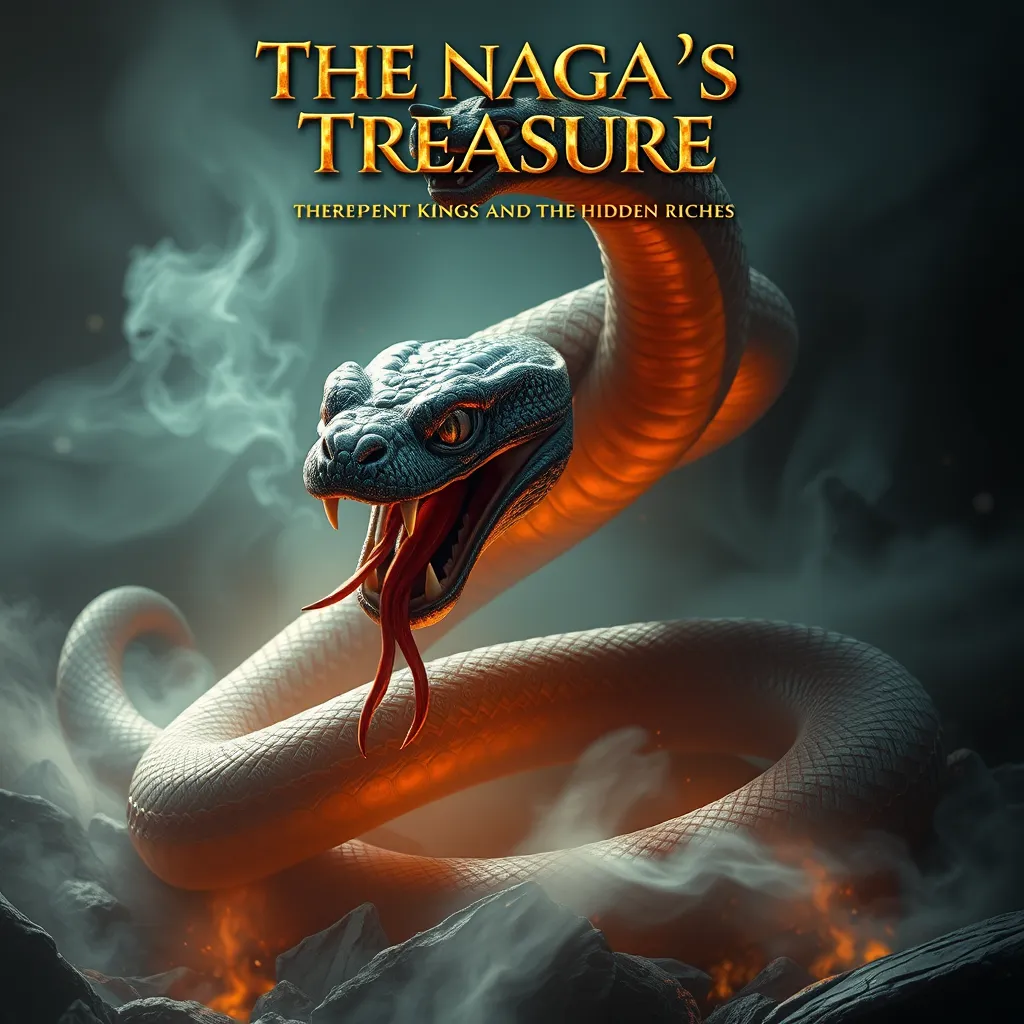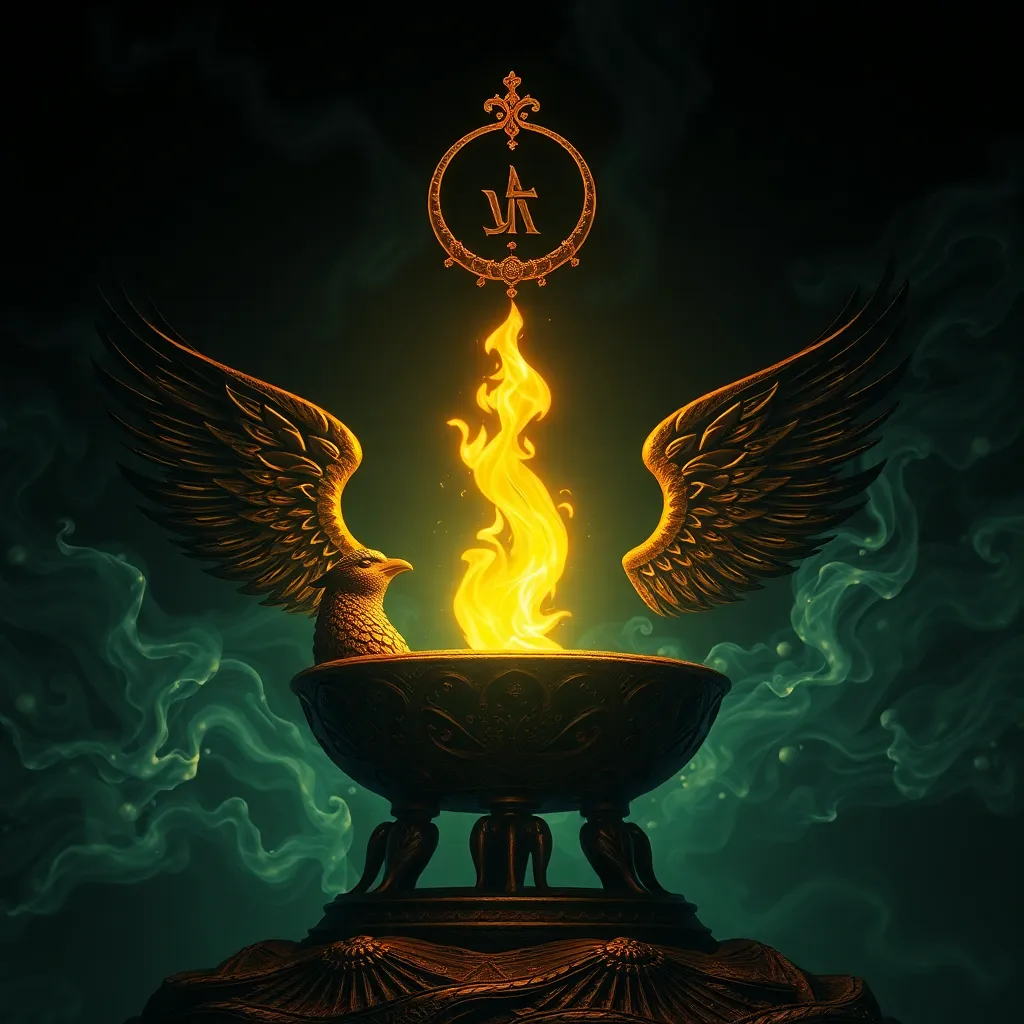The Naga’s Treasure: Serpent Kings and the Hidden Riches
I. Introduction
The Naga, a mythical serpent being, holds a significant place in various mythologies across Asia. Revered as a symbol of power, protection, and wisdom, the Naga is often associated with water, fertility, and prosperity. Their narrative is interwoven with the concept of hidden treasures, particularly in relation to the Serpent Kings who are believed to guard immense wealth beneath the earth or in the depths of the oceans.
This article aims to delve into the rich tapestry of Naga mythology, exploring the legends of Serpent Kings and the treasures they are said to hide. We will journey through historical accounts, modern interpretations, and the ongoing allure of treasure hunting associated with these mythical beings.
II. The Naga in Mythology
The legend of the Naga can be traced back to ancient civilizations, with its origins rooted in the spiritual beliefs of many cultures. In Hindu and Buddhist traditions, the Naga is often depicted as a half-human, half-serpent figure, embodying both earthly and celestial qualities.
Across various regions, the Naga holds immense cultural significance:
- Southeast Asia: In countries like Thailand, Laos, and Cambodia, Nagas are considered protectors of water bodies and are often featured in temple architecture and local festivals.
- India: The Naga is revered in Hindu mythology as a celestial being associated with the underworld, often connected to stories of creation and destruction.
Symbolically, the Naga represents duality, embodying both good and evil, and serves as a guardian deity, protecting treasures and sacred places from the unworthy.
III. The Serpent Kings: Rulers of the Underworld
Within the lore of the Naga, the Serpent Kings emerge as powerful rulers of the underworld. Different cultures portray these kings with varied attributes:
- In Hinduism: Naga kings like Vasuki and Ananta are depicted as divine beings with the ability to control the waters and the elements.
- In Southeast Asian beliefs: Serpent Kings are often associated with rain and fertility, believed to provide bountiful harvests.
Their powers extend beyond mere control of natural forces; they are also credited with guarding vast treasures. The idea that these kings possess hidden riches has fueled many legends and quests for treasure.
IV. Legends and Folklore Surrounding Naga Treasure
Numerous myths and stories highlight the allure of Naga treasures. These tales often share common themes:
- Guardianship: Treasures are usually protected by the Naga or Serpent Kings, making them difficult to find.
- Trials and Tests: Seekers of the treasure often face challenges, requiring them to prove their worthiness.
- Transformation: Those who seek the treasure may undergo personal transformations, either gaining wisdom or suffering dire consequences.
In local folklore, the Naga continues to play a crucial role, influencing cultural practices, festivals, and even architecture, solidifying their status as both revered and feared beings.
V. Historical Accounts of Treasure Seekers
Throughout history, many expeditions have been undertaken in search of Naga treasures. These journeys often blur the lines between myth and reality:
- Early Explorers: Adventurers in the 19th and early 20th centuries sought to uncover the lost treasures of the Naga, driven by the promise of wealth and glory.
- Modern Archeology: Some archaeological discoveries have sparked interest in the tales of hidden Naga treasures, revealing artifacts that support the legends.
Notable discoveries, such as ancient coins and relics, have raised questions about the historical accuracy of these legends and their implications for understanding the cultural significance of the Naga in ancient societies.
VI. Modern Interpretations and Cultural Impact
The Naga’s influence extends into modern literature and film, often depicted as enigmatic beings embodying mystery and power. These interpretations have revitalized interest in Naga mythology, leading to:
- Literature: Novels and stories that weave Naga legends into contemporary narratives, captivating new generations.
- Film and Television: Movies and series that explore the themes of treasure hunting and mythical creatures, often drawing inspiration from Naga lore.
Contemporary treasure hunts inspired by Naga legends reflect a blend of adventure and cultural heritage, as seekers are motivated by both the thrill of discovery and the desire to connect with their roots.
VII. The Quest for Naga Treasures: Risks and Rewards
Engaging in the quest for Naga treasures comes with its own set of challenges and ethical considerations:
- Challenges: Treasure seekers face physical dangers, environmental obstacles, and the psychological toll of chasing elusive legends.
- Ethical Considerations: The pursuit of hidden treasures raises questions about cultural appropriation and the preservation of sacred sites.
- Benefits: Uncovering Naga treasures can lead to significant contributions to cultural heritage, providing insights into ancient civilizations and their beliefs.
VIII. Conclusion
The Naga and their treasures continue to captivate the imagination of many, symbolizing not just riches but also the ancient wisdom and cultural heritage they represent. The allure of treasure hunting, intertwined with the rich lore of the Naga, reflects a timeless quest for knowledge and connection to the past.
As we look to the future, the preservation of Naga mythology and its treasures remains essential. These stories not only enrich our understanding of diverse cultures but also serve as a reminder of the mysteries that lie beneath the surface of our world, waiting to be explored.



